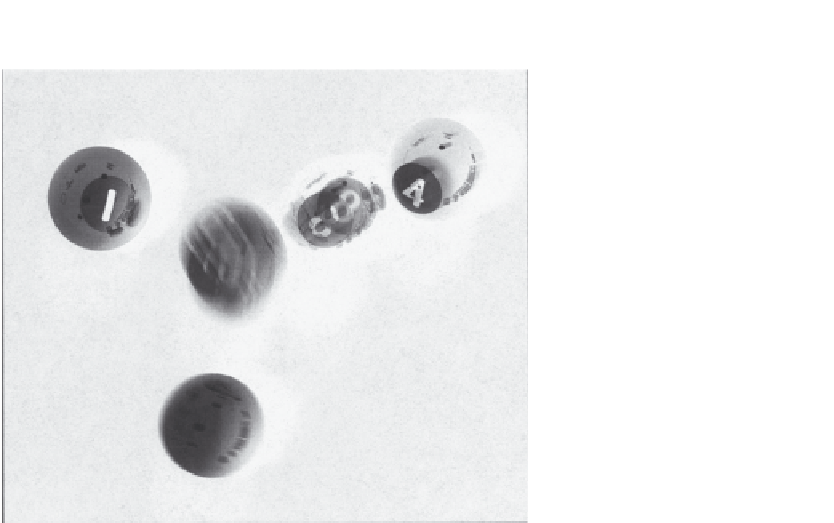Graphics Reference
In-Depth Information
FIGURE A.10
An example of synthetic (calculated) motion blur.
spatially anti-alias the image. These rays can be distributed in a regular pattern or stochastically [
2
][
3
]
[
10
]. To incorporate temporal anti-aliasing, one need only take the rays for a pixel and distribute them
in time as well as in space. In this case, the frame is not considered to be an instant in time but rather an
interval. The interval can be broken down into subintervals and the rays distributed into these subin-
tervals. The various samples are then filtered to form the final image. See
Figure A.10
for an example.
One of the extra costs associated with temporal anti-aliasing is that the motion of the objects must be
computed at a higher rate than the frame rate. For example, if a 4
4 grid of subsamples is used for anti-
aliasing in ray tracing and these are distributed over separate time subintervals, then the motion of the
objects must be calculated at sixteen times the frame rate. If the subframe motion is computed using
complex motion control algorithms, this may be a significant computational cost. Linear interpolation
is often used to estimate the positions of objects at subframe intervals.
Although discussed above in terms of distributed ray tracing, this same strategy can be used with
any display algorithm, as Korein and Badler [
6
]
note. Multiple frame buffers can be used to hold ren-
dered images at subframe intervals. These can then be filtered to form the final output image. The ren-
dering algorithm can be a standard
z
-buffer, a ray tracer, a scanline algorithm, or any other technique.
Because of the discrete sampling, this is still susceptible to temporal aliasing artifacts if the object is
moving too fast relative to the size of its features in the direction of travel; instead of motion blur,
multiple images of the object may result because intermediate pixels are effectively “jumped over”
by the object during the sampling process.
In addition to analytic methods, hand manipulation of the object shape by the animator can reduce the
amount of strobing. For example, the animator can stretch the object in the direction of travel. This will
tend to reduce or eliminate the amount of separation between images of the object in adjacent frames.



Search WWH ::

Custom Search